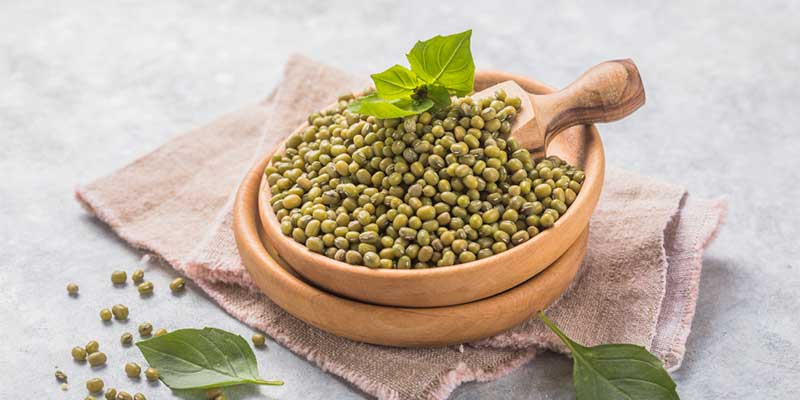Moong Dal Protein Per 100g
When we think of plant-based protein sources, legumes often come to mind, and among them, moong dal (also known as mung beans) holds a special place.
Revered in many Asian cuisines for its versatility and health benefits, moong dal is a staple in vegetarian and vegan diets, providing a rich source of protein.
| Quick Summary |
| 100 grams of moong dal (green gram) contains about 24 grams of protein, making it a highly nutritious and protein-rich legume. |
But how much protein does moong dal actually contain, and what makes it such a valuable part of a balanced diet? Let’s explore the protein content in moong dal and why it's a must-have in your pantry.
Understanding the Protein Content of Moong Dal
Moong dal is packed with nutrients, and one of its most significant contributions to your diet is its protein content.
On average, 100 grams of raw moong dal provides approximately 24 grams of protein. This is quite impressive, especially for those seeking to increase their protein intake through plant-based sources.
Moong Dal: A Complete Protein Source?
One common concern with plant-based proteins is whether they provide all the essential amino acids—the building blocks of protein that our bodies cannot produce on their own.
Moong dal contains all nine essential amino acids, making it a complete protein source, albeit in varying proportions.
This makes it particularly advantageous for those who do not consume animal products, as it helps meet their daily protein requirements effectively.
Comparing Moong Dal with Other Protein Sources
When comparing moong dal to other common sources of plant-based protein, its superiority becomes clear. For instance:
- Chickpeas (Garbanzo beans): 100 grams of chickpeas contain about 19 grams of protein.
- Lentils: 100 grams of lentils provide approximately 9 grams of protein.
- Tofu: 100 grams of tofu offers about 8 grams of protein.
Moong dal not only provides more protein per 100 grams than these alternatives, but it is also easier to digest, making it a preferred choice for those with sensitive digestive systems.
Health Benefits Beyond Protein
While the protein content of moong dal is impressive, this legume offers much more:
- Rich in Fiber: Moong dal is high in dietary fiber, aiding in digestion and promoting a healthy gut.
- Low in Calories: It is a low-calorie food, making it ideal for weight management.
- Packed with Antioxidants: Moong dal contains several antioxidants that help combat oxidative stress and reduce inflammation in the body.
- Supports Heart Health: With a low glycemic index and a rich supply of potassium, moong dal can help regulate blood pressure and support cardiovascular health.
How to Incorporate Moong Dal into Your Diet
Moong dal is incredibly versatile and can be used in a variety of dishes:
- Dal Soup: A simple, nutritious soup made with cooked moong dal, turmeric, and cumin.
- Salads: Sprouted moong dal can be added to salads for an extra protein punch.
- Dosas and Pancakes: Ground moong dal can be used to make protein-rich dosas or pancakes.
- Stews and Curries: Moong dal is a great addition to vegetable stews and curries, enhancing both the flavor and nutritional value.
Conclusion
Moong dal is not just a humble legume; it’s a powerhouse of nutrition, particularly when it comes to protein. With 24 grams of protein per 100 grams, it stands out as one of the best plant-based protein sources available.
Whether you’re looking to build muscle, manage your weight, or simply eat healthier, incorporating moong dal into your diet is a step in the right direction.
Its ease of digestion, versatility in cooking, and numerous health benefits make it an indispensable part of a balanced diet, especially for vegetarians and vegans.
So the next time you’re planning a meal, consider adding moong dal—not just for its protein, but for the myriad of benefits it offers your health.
Also Read:
Protein In Kala Chana Per 100g


